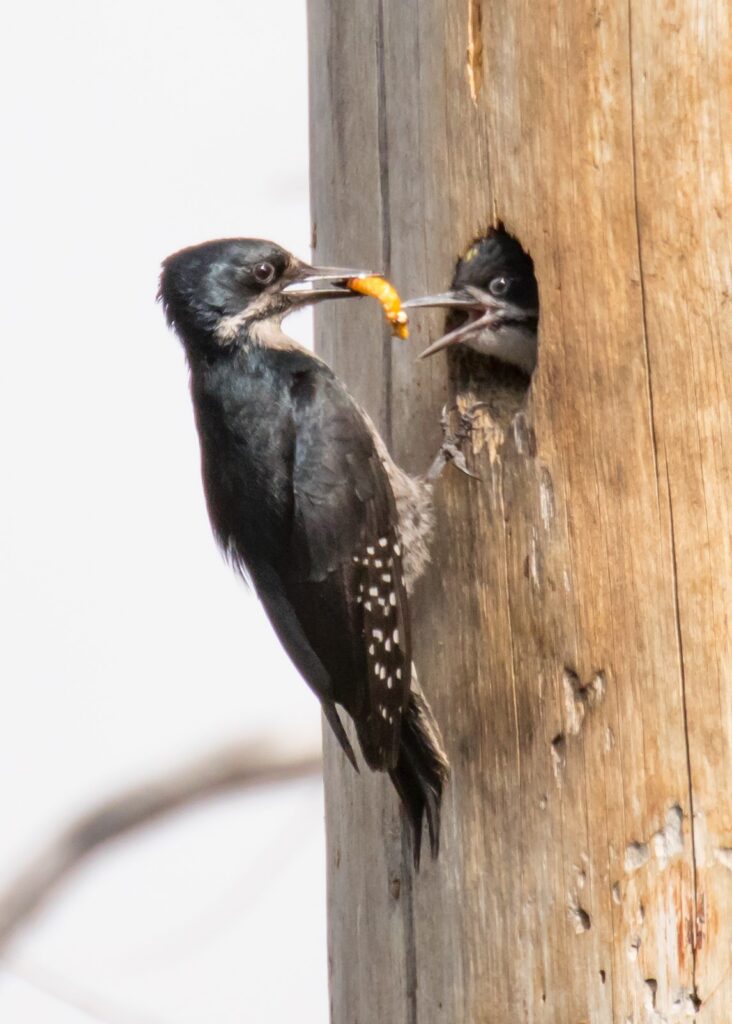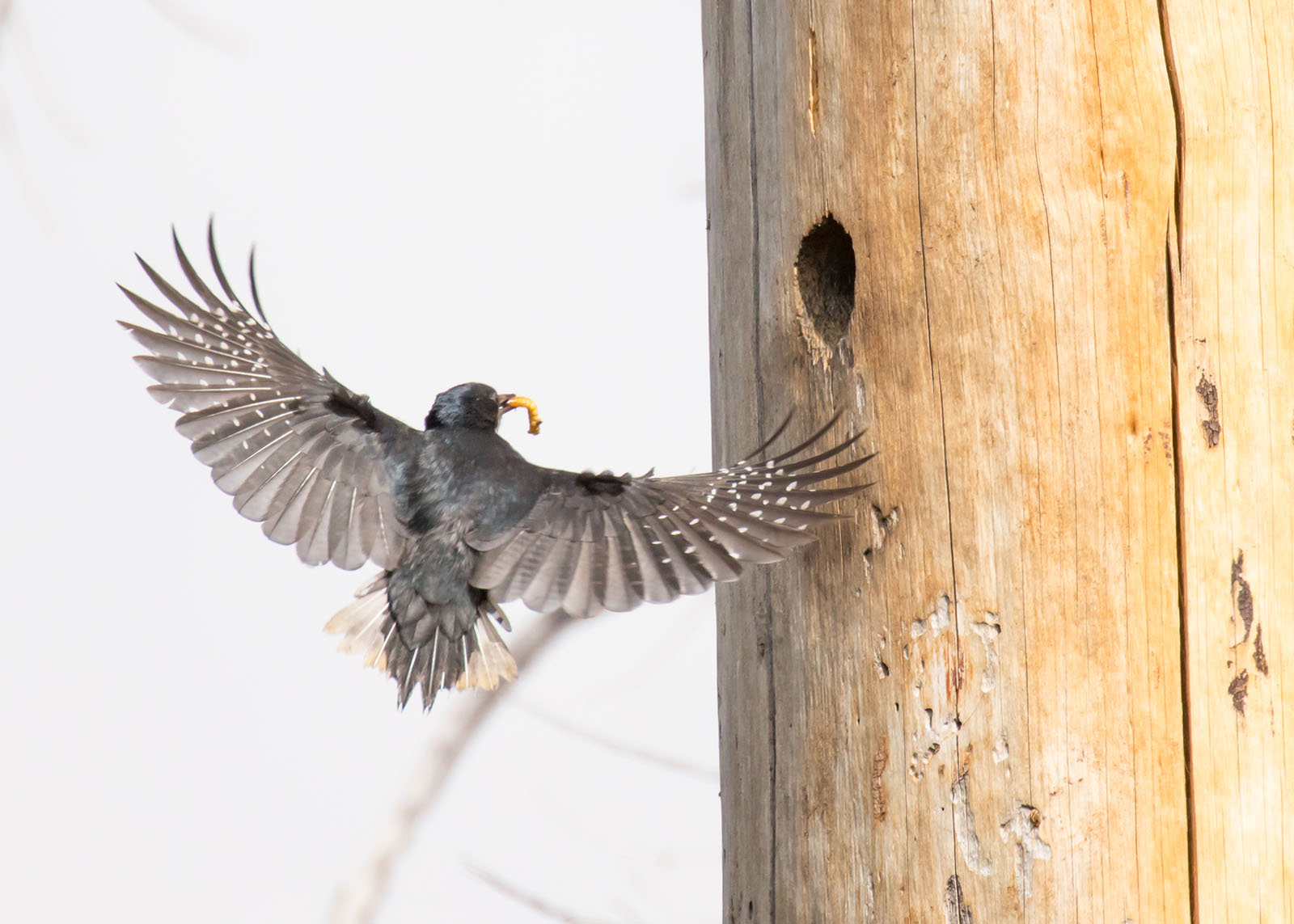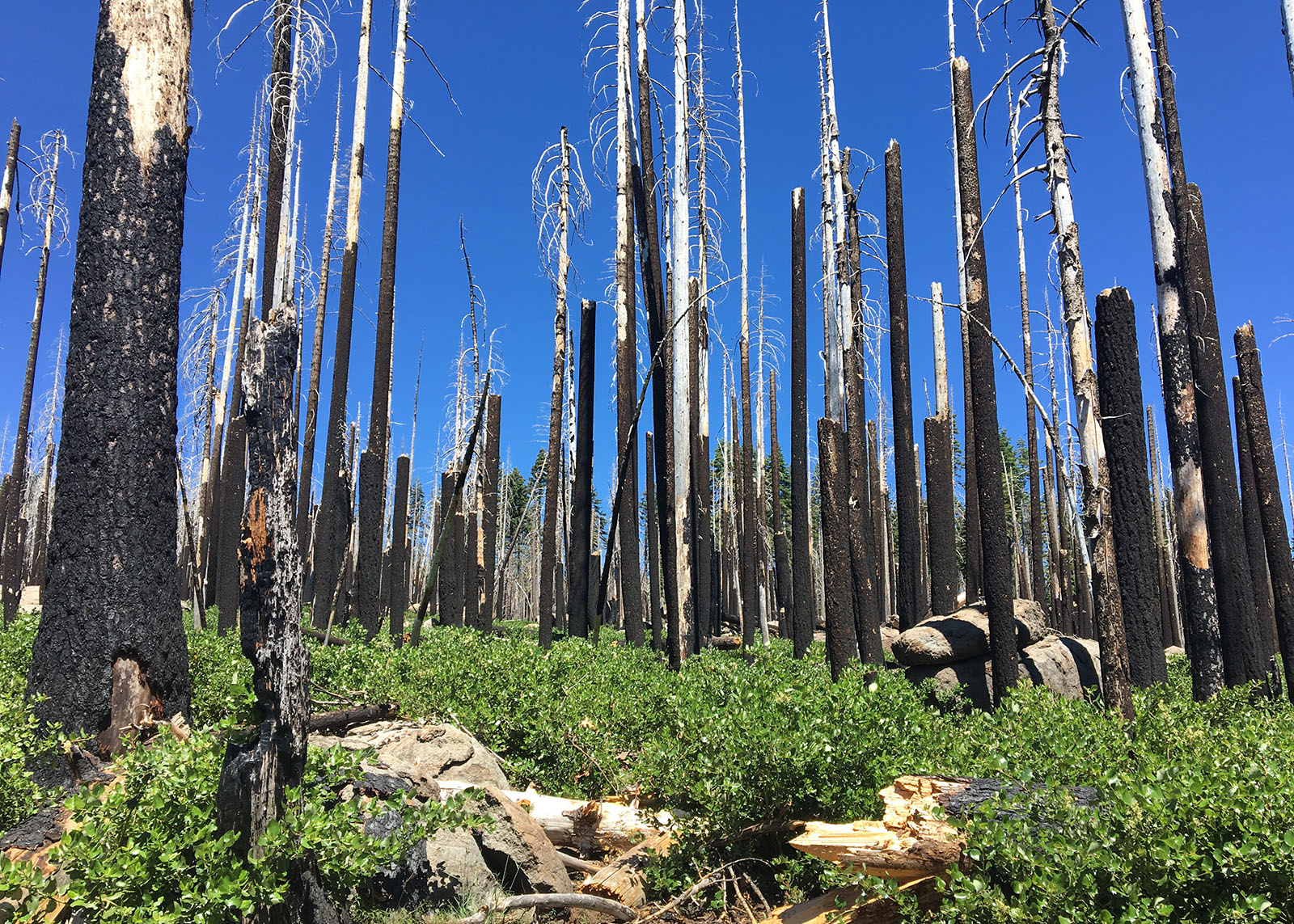By Sabrina S. Taylor, Senior Editor, Ornithology

The final two papers in a Special Feature highlighting Advances in Avian Diet: Methods and Applications have been published in the AOS journal Ornithology (see the links below or the January 2022 issue of Ornithology and the February 2022 issue of Ornithological Applications for six previously published articles). One paper is a review of ecological and evolutionary perspectives on diffuse competition and diet in New World wood warblers, described in this Wing Beat post. The second paper is original research examining diet and resource partitioning among woodpecker species in burned forests.
Fire is a major form of ecological disturbance, so understanding how avian species exploit arthropods associated with deadwood, post-fire, gives important perspective for managing fire at the landscape level. Stillman et al. used DNA metabarcoding to examine diet in recent (≤5 yr) and older (>5 yr) post-fire forests for four species of woodpecker: Black-backed Woodpecker (Picoides arcticus), Hairy Woodpecker (Dryobates villosus), Northern Flicker (Colaptes auratus), and White-headed Woodpecker (Dryobates albolarvatus).
They discovered much broader diets in Northern Flicker and Black-backed Woodpecker than previously known, and the importance of wood-boring beetles to Black-backed, Hairy, and White-headed woodpeckers. However, few dietary differences existed between newer (≤5 yr) and older (>5 yr) post-fire forests, and three of the four woodpecker species showed high overlap in diet, perhaps from the pulse in arthropods associated with post-fire deadwood. In one of the first examinations of DNA metabarcoding in woodpeckers, Stillman et al. demonstrate the value of DNA analyses in understanding diet and testing predictions about resource partitioning among arthropod-dependent species in forests affected by fire-disturbance.
Note: See the first and second Wing Beat blog posts in this series on the Advances in Avian Diet Special Feature curated by senior editor, Sabrina Taylor.
Advances in Avian Diet: Methods and Applications Series
Diet composition of reintroduced Red-and-Green Macaws reflects gradual adaptation to life in the wild by Noelia L. Volpe, Bettina Thalinger, Elisabet Vilacoba, Thomas W. A. Braukmann, Adrián S. Di Giacomo, Igor Berkunsky, Darío A. Lijtmaer, Dirk Steinke, and Cecilia Kopuchian. Ornithological Applications.
Metabarcoding of stomach contents and fecal samples provide similar insights about Seaside Sparrow diet by Allison M. Snider, Andrea Bonisoli-Alquati, Anna A. Pérez-Umphrey, Philip C. Stouffer, and Sabrina S Taylor. Ornithological Applications.
Endogenous biomarkers reveal diet partitioning among three sympatric species of swallows by Kaelyn H. Bumelis, Michael D. Cadman, and Keith A. Hobson, Ornithology.
Evaluating the impacts of metabarcoding primer selection on DNA characterization of diet in an aerial insectivore, the Purple Martin by Anna M. Forsman, Brandon D. Hoenig, Stephanie A. Gaspar, Jason D. Fischer, Joe Siegrist, and Kevin Fraser. Ornithology.
Current methods and future directions in avian diet analysis by Brandon D. Hoenig, Allison M. Snider, Anna M. Forsman, Keith A. Hobson, Steven C. Latta, Eliot T. Miller, Michael J. Polito, Luke L. Powell, Samantha L. Rogers, Thomas W. Sherry, David P. L. Toews, Andreanna J. Welch, Sabrina S. Taylor, and Brady A. Porter. Ornithology.
DNA metabarcoding reveals broadly overlapping diets in three sympatric North American hummingbirds by Austin R. Spence, Erin E. Wilson Rankin, and Morgan W. Tingley. Ornithology.
Extensions and limitations of MacArthur (1958): A review of ecological and evolutionary approaches to competition and diet in the New World wood warblers (Parulidae) by T.W. Sherry and C.M. Kent. Ornithology.
DNA metabarcoding reveals broad woodpecker diets in fire-maintained forests by Andrew N. Stillman, Marcos V. Caiafa, Teresa J. Lorenz, Michelle A. Jusino, and Morgan W. Tingley. Ornithology.


